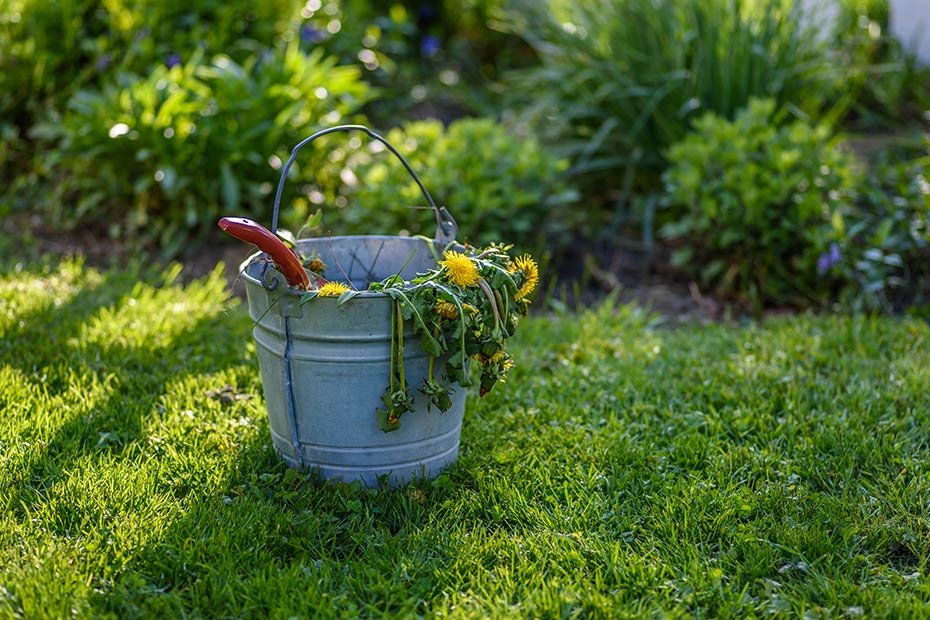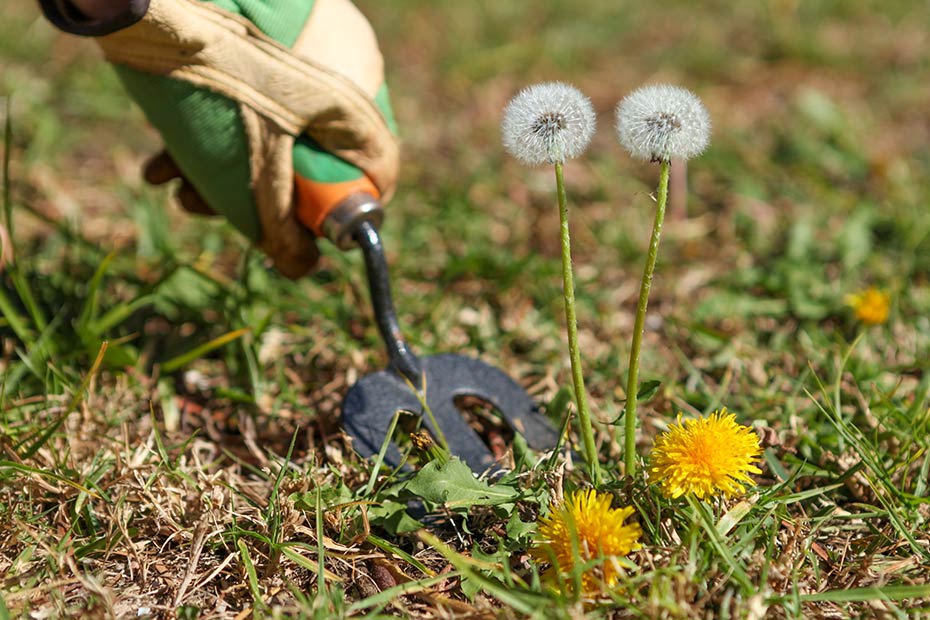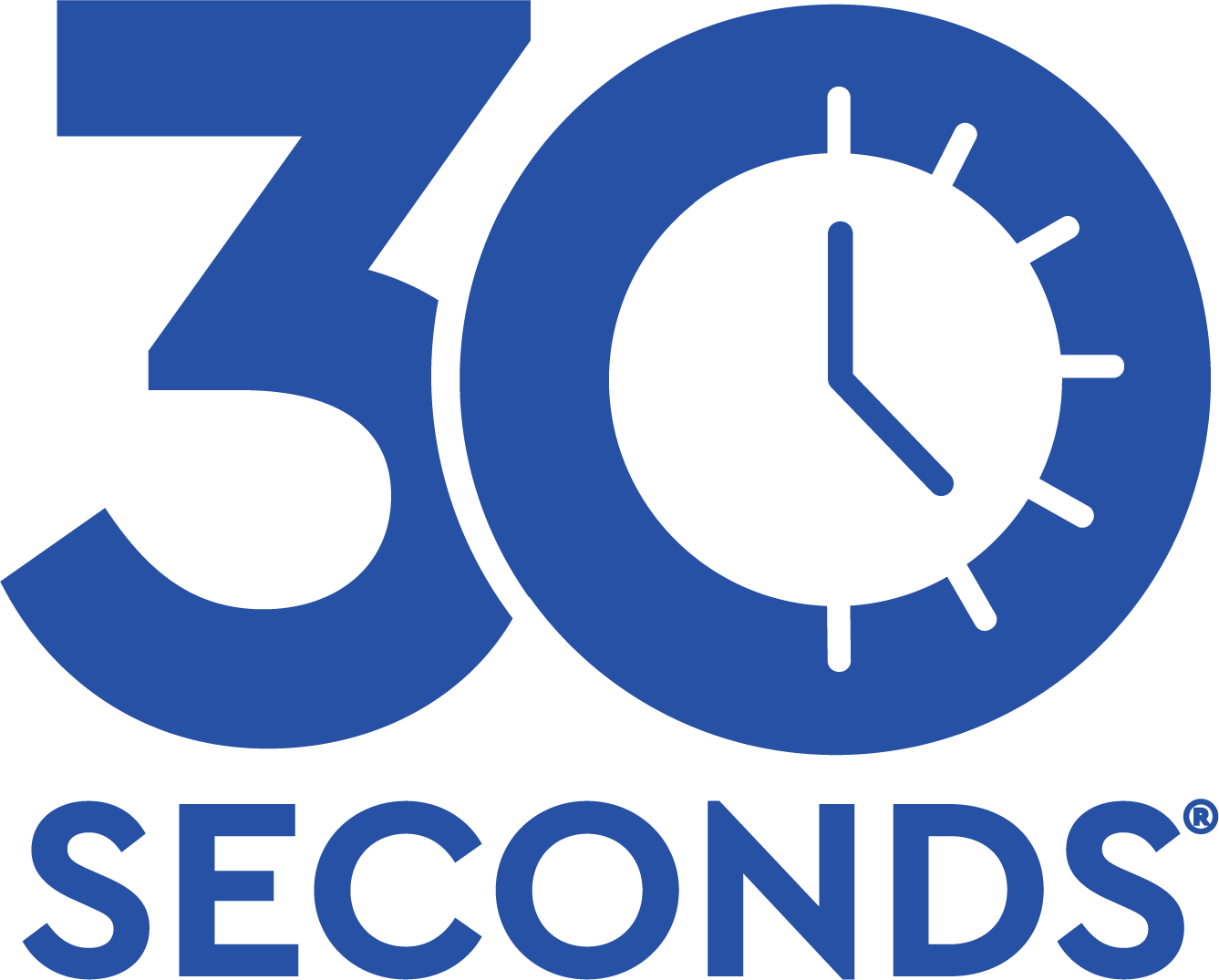

No invaders. That’s how most gardeners and enthusiastic landscapers feel about their flower beds and lawns. Weeds and crabgrass are not allies. Off with their heads!
But it’s not always so easy to control weeds, dandelions and other pesky growth in outdoor spaces. Dandelions easily spread in the wind, while many weeds use animal dispersion to travel and grow. Crabgrass is tough, too. Even if you mow it, quarter-inch tall crabgrass can produce seeds and spread.
So how do we choose the right weed killer or herbicide? We’ll walk you through what you need to know before trying to eliminate any weeds.
What else should I know about weed killers?
Healthy lawns and gardens can prevent the spread of weeds. That’s because healthy plants grow big and strong to form a base that’s hard for weeds to break into. We recommend checking your outdoor areas frequently to see if any small weed patches are developing. If you see a small patch, you can try pulling by hand.
When is the best time to pull weeds?
If you’re pulling weeds by hand, wait until there’s good rain. It’s easier to pull weeds from damp soil. However, don’t wait too long. It’s best to remove weeds before they produce seeds. That’s why checking your outdoor spaces frequently is crucial.


Types of weed killers
- Selective weed killers: If you have beautiful landscaping or a flower bed you’re looking to protect, choosing a selective weed killer might be the best route for you. Selective weed killers are designed so they eradicate weeds but not beneficial plants. They aren’t always perfect, but they do a great job helping maintain lawns and gardens.
- Nonselective weed killers: Do you have weeds popping up from cracks in the driveway or sidewalks? Maybe there’s unwanted growth in areas around your patio or along your fence? A nonselective weed killer is perfect. For example, Green Gobbler Total Control Weed & Grass Killer quickly removes dandelions, crabgrass, and perennial weeds from unwanted areas. Unlike some traditional weed killers, Green Gobbler uses a biodegradable formula that’s derived from corn. Weeds will wilt in 24 hours.
- Residual weed killers: These products prevent weeds from germinating and spreading in the following seasons. Typically, most people apply a pre-emergent herbicide or residual weed killer in the early spring. However, it should be noted these types of products prevent the germination of seeds from favorable plants, too.





















